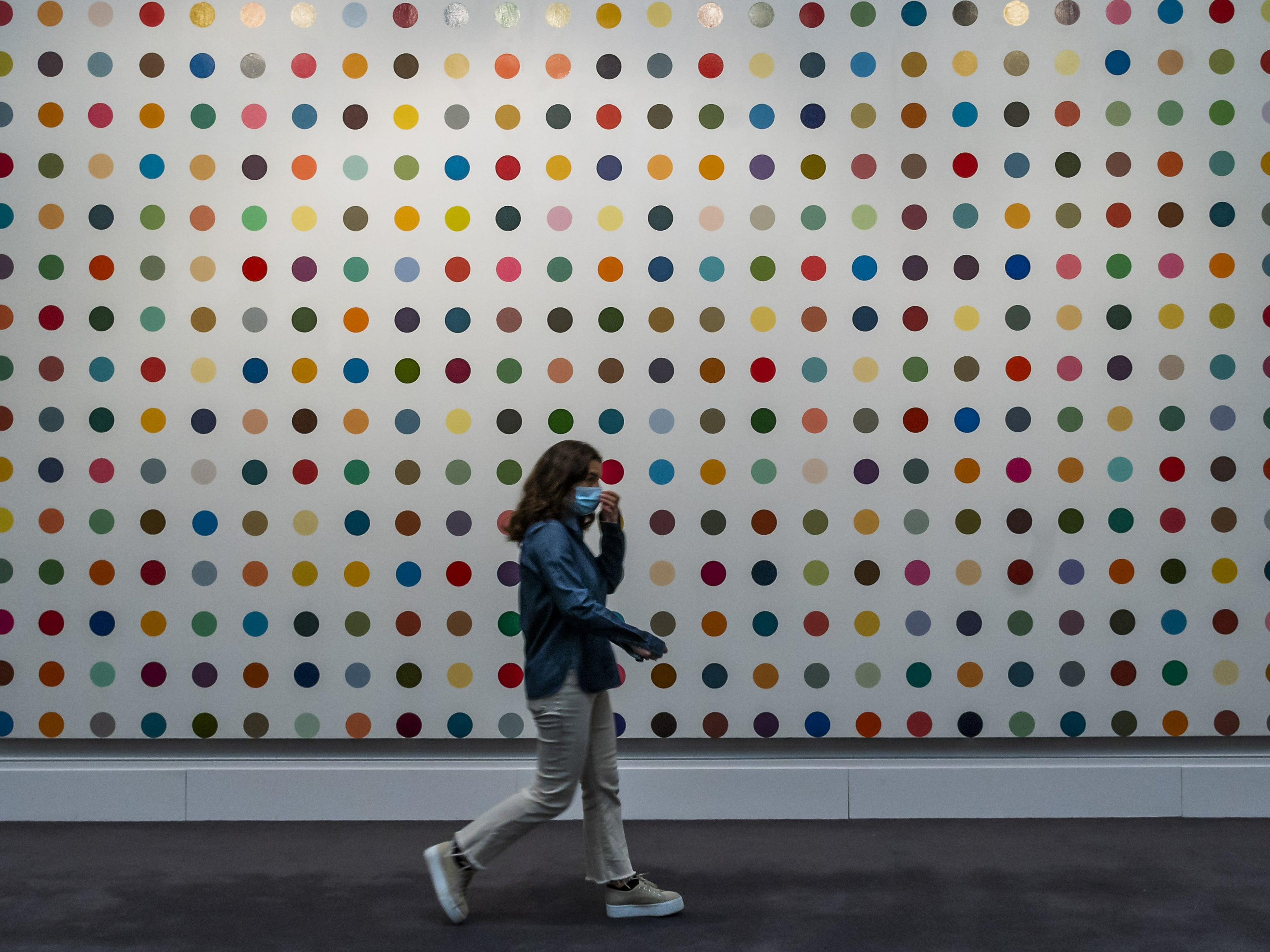Damien Hirst burns the first of thousands of his paintings as part of NFT project
Buyers purchased NFTs for the artwork for over £1,600
Damien Hirst has burned some of his artworks.
The artist burned pieces from his first NFT collection, The Currency, on Tuesday (11 October).
It was the first burning session to take place at Newport Street Gallery, Vauxhall, London. The remaining artworks will be burned at a specified time each day for the rest of the exhibition until it concludes on 30 October.
Hirst launched The Currency in July last year. He made 10,000 unique dot paintings in 2016, which were each linked to corresponding NFTs and sold for $2,000 (£1,663) each.
Buyers were given a choice to keep the NFT or exchange it for its corresponding physical piece. They had until 27 July this year to make their decision.
Over half the collectors (5,149) decided to keep the physical artwork, while 4,851 opted to keep the NFT.
The remaining physical paintings – which people did not opt for – are being destroyed.
The artworks were created in 2016 by hand with enamel paint and handmade paper. No colour is repeated twice on a single piece.
The titles of the pieces were generated by a machine, which learnt some of Hirst’s favourite song lyrics.
Hirst previously told The Art Newspaper that his project “touches on the idea of art as a currency and a store of wealth”.

He said: “This project explores the boundaries of art and currency – when art changes and becomes a currency, and when currency becomes art.
“It’s not a coincidence that governments use art on coins and notes. They do this to help us believe in money. Without art, it’s hard for us to believe in anything.”
Hirst is believed to be the UK’s richest living artist, with an estimated wealth of $384m (£288m) according to the Sunday Times Rich List 2020.
Join our commenting forum
Join thought-provoking conversations, follow other Independent readers and see their replies
Comments


Bookmark popover
Removed from bookmarks